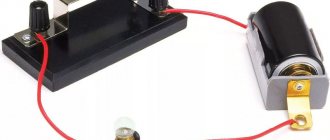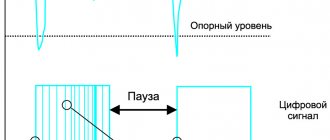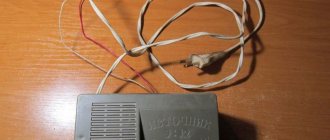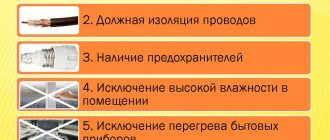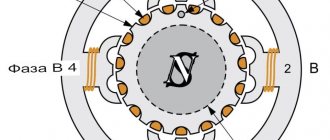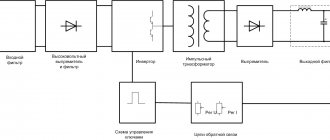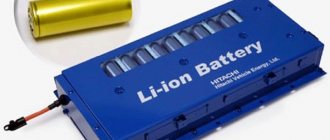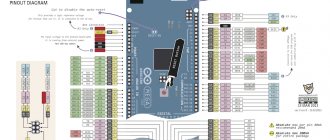There are a large number of circuits used in electronics and electrical engineering that require the isolation or separation of high power voltages from low voltage control circuits. This creates a kind of protection for low-voltage devices from the influence of high voltage. That is, in such circuits there is no longer the flow of ordinary electric current. In such cases, in the absence of current, a large ohmic resistance arises between the devices, causing an open circuit. This problem is successfully solved by galvanic isolation, which removes the galvanic connection between devices.
Operating principle
Galvanic isolation, according to its function, is also known as galvanic isolation. These systems provide electrical isolation of a specific circuit from other types of circuits nearby. The use of galvanic isolation allows for contactless control and provides reliable protection of people and equipment from electric shock.
Due to its features, galvanic isolation ensures the exchange of signals or energy between circuits, while eliminating direct electrical contact. With its help, an independent signal circuit is formed by forming an independent current circuit of the signal circuit in relation to the current circuits of other circuits.
Galvanic isolation is used during measurements in power and feedback circuits. This technical solution also ensures electromagnetic compatibility, enhances protection against interference, and improves measurement accuracy. The galvanic isolation unit used at the input and output of each device improves their compatibility with other devices in difficult electromagnetic environments.
In order to better understand what galvanic isolation is, we can consider its action using the example of a standard industrial electric motor. In most cases, production uses a supply voltage that significantly exceeds 220 volts and poses a serious danger to operating personnel.
Practical use of galvanic circuit separation
Let's look at a practical example of using galvanic circuit separation. Many companies produce galvanic isolation of signal circuits, but they do not always contain built-in DC/DC converters to separate power circuits. As far as the author knows, among the companies operating in our market, galvanic isolations with separation of power circuits are produced by Analog Devices, Texas Instruments, and Mornsun. The SiLabs company can also be counted among them, but it should be noted that its components contain power stage switches, but do not have a built-in transformer. The use of decouplers with built-in DC/DC converters reduces the space occupied on the board, simplifies the topology and, as a result, makes it easier to solve electromagnetic compatibility problems.
As an example, consider the galvanic isolation ISOW784x from Texas Instruments. Its block diagram is shown in Fig. 5.
Rice. 5. Block diagram of ISOW784x
Here are the main parameters of ISOW784x:
- supply voltage: 3.3–5 V;
- output power of built-in DC/DC converter: 0.65 W;
- output current of built-in DC/DC converter (max): 130 mA;
- data transfer rate (max): 100 Mbit/s;
- resistance to changes in common-mode voltage: 100 kV/µs;
- electrical strength of the insulating barrier: 5 kV (RMS) and 7.071 kV peak;
- operating temperature range: –40…125 °C;
- package: 16‑pin SOIC, 10.3×7.5 mm in size.
The maximum output current of 130 mA of the built-in DC/DC converter is usually quite sufficient to supply power to four input signal paths. Silicon dioxide SiO2 is used as a dielectric in the decoupling. Its dielectric strength reaches 500 V (RMS)/µm, due to which high electrical insulation strength is achieved, allowing it to meet the requirements of electrical safety standards with a margin.
Note that no galvanic separation of circuits means complete separation of parts. The feed-through capacitances of the decoupling itself, especially the small-sized built-in transformer of the DC/DC converter, and the parasitic capacitances of the board create a current circuit, which is an antenna that emits interference. Moreover, the higher the data transfer rate and the larger the area of the current loop of parasitic capacitances, the greater the amount of radiated interference. You should pay attention to these circumstances when developing the board topology and try to reduce the parasitic capacitances between the two parts of the system.
The Y2‑capacitor CISO can reduce the size of the current loop (Fig. 2). Let us remind you that according to the requirements of the IEC60384-1 standard, the maximum permissible voltage of the Y2 capacitor must be in the range of 150–300 V (AC). This capacitor must withstand a peak voltage of 5 kV. But, unfortunately, such a capacitor also has parasitic lead inductance, which reduces the efficiency of its use in the frequency band above 200–300 MHz.
The solution to this problem can be the capacitance formed by the layers of the printed circuit board (stitching capacitance). In Fig. Figure 6 shows an example of the formation of such a capacitance on a four-layer printed circuit board. The isolated parts of the system are placed on the upper and lower layers, the capacitance is formed using the ground and power layers. In this case, the capacitance value was 30 pF. A detailed calculation of the capacity created in this way is presented in [4].
Rice. 6. Capacitor formed by layers of printed circuit board (stitching capacitance)
Transformer (inductive) isolation
In order to build inductive isolation, you should use magnetic induction devices - transformers. Its design can be cored or coreless.
Equipping circuits with galvanic isolation of the inductive type is carried out using transformers whose transformation ratio is unity. The primary coil is connected to the signal source, and the secondary coil is connected to the receiver. On this principle, transformer-type galvanic isolations serve as the basis for the creation of magnetic modulation devices.
The output voltage arising in the secondary winding is directly related to the voltage at the input of the transformer device. In this regard, inductive isolation has serious disadvantages, which is why its use is limited:
- It is impossible to manufacture a compact device due to the significant overall dimensions of the transformer.
- The transmission frequency is limited by the frequency modulation of the isolation itself.
- Noise occurring in the input signal reduces the quality of the output signal.
- Such transformer galvanic isolation can only operate normally in the presence of alternating voltage.
Introduction
Eliminating the influence of “ground noise” is one of the main purposes of digital isolation. In Fig. Figure 1 shows a typical case of digital isolation, where the ground loop is broken by a high-impedance insulator. As a result, most of the noise is applied to the high-impedance barrier, and not to the receiver and other sensitive elements of the circuit.
Rice. 1. The “ground” loop between the circuit nodes is broken using an insulator
A real information network used in industrial conditions must support several levels of the internal hierarchy of the system at once - both a relatively “clean” control level, where the level of noise and interference is low, and a rather “contaminated” executive level, where the negative impact of external factors is more significant. The last level requires the use of reliable and, most importantly, stable communication systems. It is the combination of low cost requirements with high stability that leads to the use of digital isolators based on optical, inductive or capacitive technologies.
Operating principle of capacitive decoupling
The question often arises as to why different types of decoupling are needed, including capacitive decoupling. This circuit represents a system in which there are no connections between the circuits through current, ground and other elements.
In this case, the transmission of data from electrical circuits is carried out using an alternating electric field. The insulation of the circuits occurs due to the dielectric located between the capacitor plates. The quality of the decoupling capacitor is determined by the properties of the dielectric, the size of the plates and the distance between them. This type of insulation has increased energy efficiency; devices based on it are small in size, capable of transmitting electricity and do not respond to external electromagnetic fields.
Normal operation of devices is ensured by separation of signal and interference frequencies. Thus, the capacitance provides very little resistance to the working signal, but creates a barrier for interference.
SamsPcbGuide, Part 9: Galvanic Isolation, Safety and PCBs
This article continues the discussion of the topic raised by @olartamonov, namely, ensuring safety in high-voltage applications. The article will discuss the physical basis of dielectric breakdown, as well as the new safety standard.
Safety requirements apply to any electronic equipment, despite the fact that they are overhead from the point of view of the functioning of the product. They require the use of additional circuit solutions and electronic components, complicate the topology of printed circuit boards, increasing the weight and dimensions of the product, the volume of testing and, thereby, its cost and time to market. Only functionality can be limited only when developing prototypes or prototypes of the device. Unfortunately, nowadays, with the ease of reaching the buyer (bypassing certification centers), reducing costs and saving on testing, electronic products lose not only reliability, but also safety.
Fundamentals of the theory of electrical breakdown in gases and solids
where p is pressure, a and b are experimental constants that depend on the gas. In Fig. Figure 1 shows the Paschen curve for dry air with a relative humidity of 60% at a temperature of 20 o C. Note that the Paschen curve has a minimum value. Increasing pressure leads to an increase in density and an increase in the probability of collisions, but reduces the mean free path and, consequently, the energy of the particles. This leads to an increase in the breakdown voltage in the high pressure region, on the right side of the graph. In the region of low values, the breakdown mechanism depends on the ratio of the free path and the distance between the electrodes. The electrical strength of air at normal atmospheric pressure is 3.1 kV/mm and it decreases with increasing temperature and decreasing pressure. As a conservative estimate when designing electrical insulation, a value of 1-1.5 kV/mm is usually accepted.
For solid dielectrics, the concept of intrinsic electrical strength is introduced - the minimum value of the electric field strength in a homogeneous material, at which free or valence electrons acquire enough energy so that when they collide with atoms or bound electrons, new conduction electrons are formed, which leads to breakdown. This value depends on temperature, for some materials it can reach several MV/mm and is the theoretical limit of electrical strength. In practice, breakdown occurs at much lower electric field strengths. The main reasons for this are:
The presence of moisture or contamination on the surface can lead to the formation of conductive channels, which, even with low conductivity, create equipotential surfaces, reducing the actual gap between the electrodes and thereby leading to breakdown.
Electrical breakdown in dielectric materials is caused by a whole complex of complex physical phenomena, including a probabilistic component and depending on a large number of external factors. Therefore, analytical and computational models can be built only for the simplest cases. In practice, when designing, one should be guided by the requirements of the standards, carry out insulation testing under conditions close to real operating conditions, and, if possible, provide an insulation safety margin. Understanding the theoretical basis of electrical breakdown mechanisms allows one to make decisions when it is necessary to compromise with the recommendations of standards.
New safety standard
Each group of electronic devices has its own electrical safety standard. The current safety standard is 62368-1, which replaced and combined the outdated standards 60950-1 and 60065. The standard, unlike its predecessors, is very systematic and structured and is recommended for study. Also, recommendations for galvanic isolation are specified in the IPC standards: the general printed circuit board design standard IPC2221 and the voltage converter standard IPC9592.
The basic model of the secure system in 62368-1 looks very simple (Figure 3). In general, mechanisms to protect against the transfer of energy (electrical, chemical, kinetic, thermal, etc.) that can cause pain or cause injury include:
Based on the hazard, energy sources are divided into three classes (section 4.2), each of which has its own minimum level of protection, depending on the type of user of the equipment. For the average user this is:
Section 5.2 of the standard is devoted to the classification of sources. DC sources with an output voltage greater than 60 V are defined as dangerous and require insulation (Fig. 4). The same voltage levels are considered dangerous for single pulses and for capacitors with a capacity of more than 300 nF; as the capacitance decreases, the requirements decrease (for 4 nF this is already 1 kV, see Table 7 of the standard). For AC sources, the threshold voltage is 30 V rms.
If the operation of an electronic device uses electrical energy sources of class 2 and 3, then when designing the printed circuit boards included in its composition, the requirements for minimum clearances (English clearance) and creepage distances (English creepage), the materials and components used must be observed. Printed circuit boards are covered in a separate section, G.18, in Appendix G, Components, which contains references to the general sections 5.4.2 Clearances and 5.4.3 Creepage Distances.
When choosing minimum clearances and creepage distances, one should proceed not only from voltage values, but also from operating conditions and dielectric material (Fig. 5). The breakdown of the air gap is affected by pressure, so the standard introduces increasing factors for altitudes above 2000 m above sea level (Table 22 of the standard). In addition, three degrees of pollution of the working environment are determined. The higher the degree of contamination, the greater the distance between conductors must be provided.
Another parameter that affects the value of the minimum leakage distance is the group of the material in terms of resistance to breakdown on the surface. The IEC 60112 standard divides dielectric materials into 4 groups depending on the value of the CTI (Comparative Tracking Index) index. The higher the CTI value, the higher the breakdown resistance and the smaller the minimum creepage distance values are acceptable, all other things being equal. Standard fiberglass FR4 with CTI
175...200 is on the boundary of group IIIb values, which is not recommended for use at pollution degree 3 and at rms voltage values of more than 630 V.
Once the parameters influencing the selection of minimum clearances and creepage distances have been determined, the values themselves are determined using tables 17-19, 23, G.12 of the standard. These minimum distances must be maintained for all conductors if there is appropriate voltage between them: in the primary circuit, between the primary and secondary circuits, as well as in secondary circuits. Table 1 shows the minimum clearances and creepage distances for printed circuit boards included in devices powered by 220 V overvoltage category II under pollution degree 2 conditions.
For outer layers, the values depend on the presence of the coating, however, it is worth considering that the standard mask is not a specialized insulating coating and does not provide the ability to apply reduced clearance requirements. The mask has an uneven thickness and may contain cavities and cracks that reduce the reliability of such insulation.
As for the internal layers, for conductors on adjacent layers the minimum gap for solid insulation is used for single-layer insulation of 0.4 mm, and for conductors on one layer the insulation is considered as a cemented joint. According to the standard for such insulation, the minimum clearances and creepage distances for pollution degree 2, for pollution degree 1 or a gap for continuous insulation of 0.4 mm can be used. Moreover, in the last two cases, the standard requires testing, including thermal cycling and electrical strength testing. The fact is that there is a possibility (and for reliable applications it must be taken into account) that as a result of thermal, mechanical stress or over time, a gap will appear along the interface of adjacent layers of the printed circuit board. And then a distance of 0.4 mm may not be sufficient to ensure high-voltage insulation.
It is worth noting that in most cases the requirement for distance through the insulation between layers is minimal, so one strategy when designing printed circuit boards with size restrictions is to separate the insulated conductors and components into different layers.
Compliance with the distances required by the standard when designing a printed circuit board topology may not be sufficient, since the presence of components and structural elements of the product makes the problem three-dimensional. Therefore, the use of 3D models of components and overall product assembly is essential when designing products with hazardous stress levels.
The minimum distances required by the standard must be maintained in all directions, taking into account the presence of components on the printed circuit board, as well as the structural elements of the product.
In addition to meeting minimum spacing requirements, when designing printed circuit boards for high-voltage applications, it is recommended to avoid sharp corners in the geometry of the conductive layers (Fig. 6), since they are concentrators of the electric field strength.
From an EMC point of view, an isolation barrier is a discontinuity in the return current path, which, unless special measures are taken, results in increased emissions, especially in the case of isolated power supplies. As with discontinuities in the support layer, capacitors are used to provide a path for return currents to flow through the insulation barrier. Requirements for discrete capacitors and examples of their application are described in section G.15 of Appendix G, Components, of the standard. To isolate dangerous voltage levels, only class Y capacitors are used, failure of which leads to an open circuit: for a 220 V AC network of overvoltage class II, this is one capacitor of subclass Y1 or two series-connected capacitors of subclass Y2. The safety of such capacitors is guaranteed by the manufacturer, but parasitic connection inductance and localized location limit their effectiveness at frequencies above 100 MHz. The capacitance built into the printed circuit board, distributed between two overlapping polygons on the inner layers, does not have this drawback (Fig. 7).
It is important to understand that even full compliance with the recommendations of the standard regarding the minimum distances between conductors does not guarantee electrical safety. Only the results of dielectric strength tests (section 5.4.11 of the standard) can confirm compliance of the printed circuit board topology, materials and components used, product design and manufacturing technology with safety requirements for specific application conditions.
Source
Reliability
As shown above, robustness refers to reliability under extreme operating conditions caused by high voltage and magnetic field flux density. Reliability is measured in mean time between failures. This standard defines the reliability of semiconductor devices. For digital isolators, this approach determines the reliability of both the semiconductor chip and the isolator itself. Table 1 shows the mean time between failures for optical, inductive and capacitive digital isolators.
Table 1. Measurement of mean time between failures
The description for the ADuM1100 does not contain a detailed definition of the average operating time, but there are test results. Table 2 shows the reliability testing results for ISO721 and ADuM1100.
Table 2. Initial reliability data
The ISO72x family of digital isolators provide a low-cost, high-speed, reliable alternative to optical and inductive isolators. Additional information on the quality and reliability of the ISO72x family of digital isolators is available at www.ti.com/corp/docs/landing/iso721/.
PVDZ172N: low voltage medium power for DC
Relays of this series (Fig. 3), unlike those described above, are designed for switching currents only of constant polarity with a power of up to 1.5 A and a voltage of up to 60 V. For example, these relays are used in controlling lighting devices, motors, heating elements, etc. .d.
Rice. 3. Block diagram of PVDZ172N
PVDZ172N are available as normally open, single-pole designs in 8-pin DIP packages.
Other possible applications: audio equipment, power supplies, computers and peripherals.
PVT312: general purpose telecommunication relay
Photoelectric relay PVT312, single pole, normally open, can be used on both direct and alternating current.
This solid state relay is specially designed for use in telecommunication systems. PVT312L series relays (suffixed with "L") use an active current limiting circuit that allows them to withstand transient current surges. PVT312 is available in a 6-pin DIP package.
Applications: telecommunications keys, triggers, general switching circuits.
Connection diagrams can be of three types (Fig. 2). In the first case, two chip keys are connected in series. Due to the symmetry, this allows the resulting circuit to switch alternating voltage. This type of circuit is called a type “A” connection. Type “B” differs in that only one of the two chip keys is used. This allows you to switch a larger, but only direct current. In the third option (type “C”), the keys are connected in parallel, thereby increasing the maximum possible current value.
Rice. 2. Possible connection diagrams for PVT312
